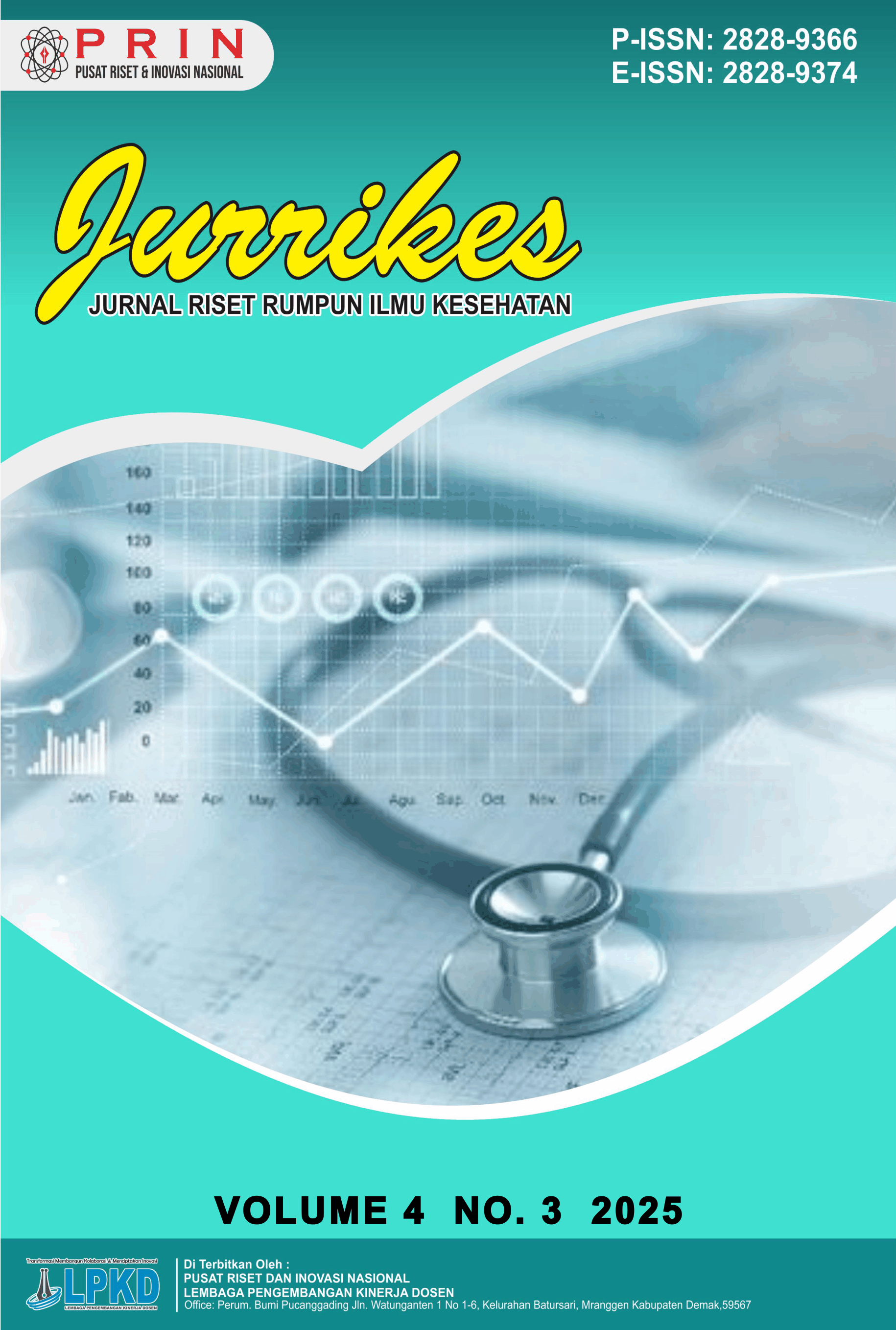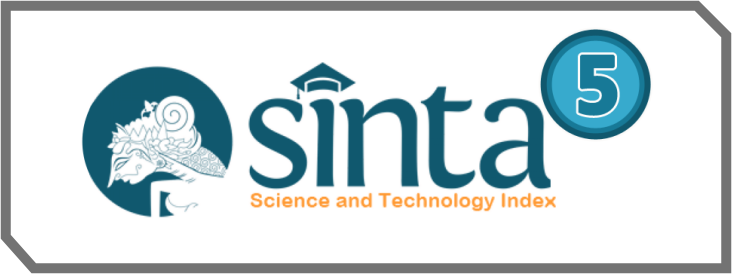Hubungan Problematic Smartphone Use dengan Revenge Bedtime Procrastination pada Pelajar Tingkat MTs/SMP di Kecamatan X
DOI:
https://doi.org/10.55606/jurrikes.v4i3.6593Keywords:
Adolescents, MTs/SMP Students, Problematic Smartphone Use, Revenge Bedtime Delay, Sleep Health.Abstract
This study aims to determine the level of problematic smartphone use (PSU) and revenge sleep procrastination (RBP) among MTs/SMP students in District X, while also examining the relationship between the two variables. The problem of excessive smartphone use among adolescents is increasingly important to study because it can impact sleep quality, learning concentration, and mental health. This research approach uses a quantitative correlational method with data collection through a bold questionnaire (Google Form). The research sample consisted of 103 MTs/SMP students in District X who were selected using an incidental sampling technique. The RBP variable measurement scale was developed by the researcher with reference to aspects proposed by Kroese et al. (2014). Meanwhile, the PSU Scale was developed based on dimensions formulated by Foerster et al. (2015), including withdrawal, desire, loss of control, dependence on peers, and negative life consequences. The results of the correlation analysis showed that PSU had a very strong positive relationship with RBP (r = 0.833) and was statistically significant (p < 0.000). This means that the higher a person's tendency to experience problematic smartphone use, the greater the likelihood of revenge bedtime delay. Among the dimensions of PSU, withdrawal showed the highest correlation with RBP (r = 0.831). This was followed by negative life consequences (r = 0.778), craving (r = 0.577), loss of control (r = 0.489), and dependence on peers (r = 0.333). Overall, this study concludes that PSU plays a significant role in increasing RBP trends among students. These findings highlight the urgent need for awareness and intervention programs to reduce excessive smartphone use among adolescents. Therefore, the results of this study are expected to serve as a reference for schools and parents in designing strategies to prevent the negative impacts of smartphone use on adolescents.
Downloads
References
Basch, C. E., Basch, C. H., Ruggles, K. V., & Rajan, S. (2014). Prevalence of sleep duration on an average school night among 4 nationally representative successive samples of American high school students, 2007–2013. Preventing Chronic Disease, 11, E216. https://doi.org/10.5888/pcd11.140383
Cohen, J. (1988). Statistical power analysis for the behavioral sciences (2nd ed.). Lawrence Erlbaum Associates.
Correa-Iriarte, S., Hidalgo-Fuentes, S., & Martí-Vilar, M. (2023). Relationship between problematic smartphone use, sleep quality and bedtime procrastination: A mediation analysis. Behavioral Sciences, 13(10), 839. https://doi.org/10.3390/bs13100839
Elhai, J. D., Dvorak, R. D., Levine, J. C., & Hall, B. J. (2017). Problematic smartphone use: A conceptual overview and systematic review of relations with anxiety and depression psychopathology. Journal of Affective Disorders, 207, 251–259. https://doi.org/10.1016/j.jad.2016.08.030
Exelmans, L., & Van den Bulck, J. (2016). Bedtime mobile phone use and sleep in adults. Journal of Sleep Research, 25(6), 678–685. https://doi.org/10.1111/jsr.12403
Foerster, M., Roser, K., Schoeni, A., & Röösli, M. (2015). Problematic mobile phone use in adolescents: Derivation of a short scale MPPUS-10. International Journal of Public Health, 60(2), 277–286. https://doi.org/10.1007/s00038-015-0660-4
Gänzler, B. (2022). The influence of academic stress and revenge bedtime procrastination on the academic performance of university students (Doctoral dissertation).
Gradisar, M., Gardner, G., & Dohnt, H. (2011). Recent worldwide sleep patterns and problems during adolescence: A review and meta-analysis of age, region, and sleep. Sleep Medicine, 12(2), 110–118. https://doi.org/10.1016/j.sleep.2010.11.008
Hanum, Z. (2021, March 2). Kemenkominfo: 89% penduduk Indonesia gunakan smartphone. Media Indonesia. https://mediaindonesia.com/humaniora/389057/kemenkominfo-89-penduduk-indonesia-gunakan-smartphone
Hirshkowitz, M., Whiton, K., Albert, S. M., Alessi, C., Bruni, O., DonCarlos, L., & Ware, J. C. (2015). National Sleep Foundation's updated sleep duration recommendations. Sleep Health, 1(4), 233–243. https://doi.org/10.1016/j.sleh.2015.10.004
Hussain, Z., Griffiths, M. D., & Sheffield, D. (2017). An investigation into problematic smartphone use: The role of narcissism, anxiety, and personality factors. Journal of Behavioral Addictions, 6(3), 378–386. https://doi.org/10.1556/2006.6.2017.052
Irish, L. A., Kline, C. E., Gunn, H. E., Buysse, D. J., & Hall, M. H. (2015). The role of sleep hygiene in promoting public health: A review of empirical evidence. Sleep Medicine Reviews, 22, 23–36. https://doi.org/10.1016/j.smrv.2014.10.001
Johnson, K. (2021). Impact of technology on sleep patterns among adolescents. Sleep Health Journal, 7(2), 123–130.
Kardaras, N. (2016). Glow kids: How screen addiction is hijacking our kids and how to break the habit. St. Martin's Press.
Kroese, F. M., De Ridder, D. T. D., Evers, C., & Adriaanse, M. A. (2016). Bedtime procrastination: A self-regulation perspective on sleep insufficiency in the general population. Journal of Health Psychology, 21(5), 853–862. https://doi.org/10.1177/1359105314540014
Kroese, F. M., Evers, C. S., & Adriaanse, M. A. (2014). Bedtime procrastination: Introducing a new area of procrastination. Journal of Social and Clinical Psychology, 33(9), 800–823. https://doi.org/10.1521/jscp.2014.33.9.800
Lestarina, E., Karimah, H., Febrianti, N., Ranny, R., & Herlina, D. (2017). Perilaku konsumtif di kalangan remaja. JRTI (Jurnal Riset Tindakan Indonesia), 2(2), 1–6. https://doi.org/10.29210/3003210000
Marini, L., Hendriani, W., & Wulandari, P. Y. (2024). Gambaran problematic smartphone use pada remaja. Psikobuletin: Buletin Ilmiah Psikologi, 5(1), 43–55. https://doi.org/10.24014/pib.v5i1.26477
Philips. (2019). The global pursuit of better sleep: 2019 Philips World Sleep Day survey results. https://www.usa.philips.com/cdam/b2c/master/experience/smartsleep/world-sleepday/2019/2019-philips-world-sleep-day-survey-results.pdf
Pusparisa, Y. (2020, September 15). Pengguna smartphone diperkirakan mencapai 89% populasi pada 2025. Databoks Katadata. https://databoks.katadata.co.id/datapublish/2020/09/15/pengguna-smartphone-diperkirakan-mencapai-89-populasi-pada-2025
Ram, S., Seirawan, H., Kumar, S. K., & Clark, G. T. (2010). Prevalence and impact of sleep disorders and sleep habits in the United States. Sleep and Breathing, 14, 63–70. https://doi.org/10.1007/s11325-009-0281-3
Sadya, S. (2023, February 3). Pengguna smartphone Indonesia terbesar keempat dunia pada 2022. Data Indonesia. https://dataindonesia.id/digital/detail/pengguna-smartphone-indonesia-terbesar-keempat-dunia-pada-2022
Solomon, L. J., & Rothblum, E. D. (1984). Academic procrastination: Frequency and cognitive-behavioral correlates. Journal of Counseling Psychology, 31(4), 503–509. https://doi.org/10.1037/0022-0167.31.4.503
Steel, P. (2007). The nature of procrastination: A meta-analytic and theoretical review of quintessential self-regulatory failure. Psychological Bulletin, 133(1), 65–94. https://doi.org/10.1037/0033-2909.133.1.65
Suni, E., & Dimitriu, A. (2023, December 8). Revenge bedtime procrastination: Definition & psychology. Sleep Foundation. https://www.sleepfoundation.org/sleep-hygiene/revenge-bedtime-procrastination
Tyagi, J. (2022). Revenge bedtime procrastination during the pandemic. International Journal of Indian Psychology, 10(1), 720–727. https://doi.org/10.25215/1001.074
Van den Bulck, J. (2004). Television viewing, computer game playing, and internet use and self-reported time to bed and time out of bed in secondary-school children. Sleep, 27(1), 101–104. https://doi.org/10.1093/sleep/27.1.101
Yen, J., Ko, C., Yen, C., Wu, H., & Yang, M. (2007). The comorbid psychiatric symptoms of internet addiction: Attention deficit and hyperactivity disorder (ADHD), depression, social phobia, and hostility. Journal of Adolescent Health, 41(1), 93–98. https://doi.org/10.1016/j.jadohealth.2007.02.002
Yıldız, M. A. (2017). Emotion regulation strategies as predictors of internet addiction and smartphone addiction in adolescents. Journal of Educational Sciences & Psychology, 7(1), 66–78.
Downloads
Published
How to Cite
Issue
Section
License
Copyright (c) 2025 JURNAL RISET RUMPUN ILMU KESEHATAN

This work is licensed under a Creative Commons Attribution-ShareAlike 4.0 International License.







